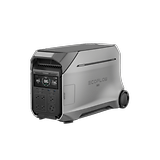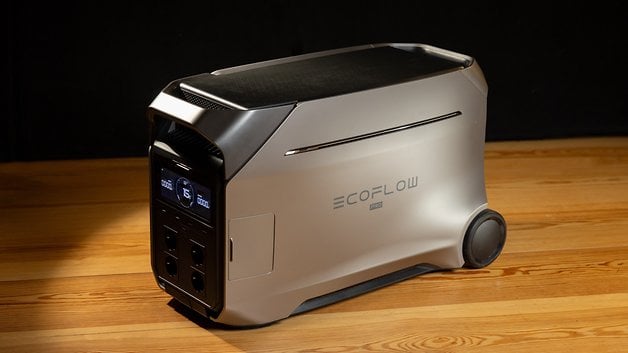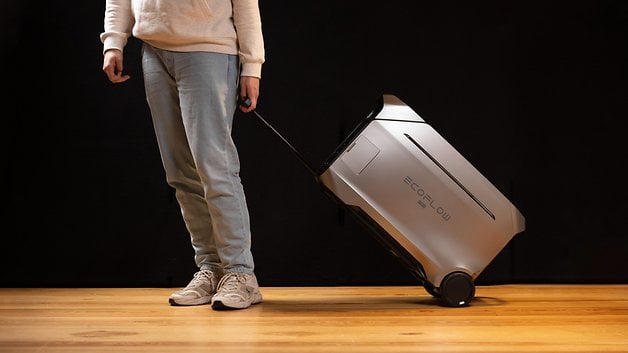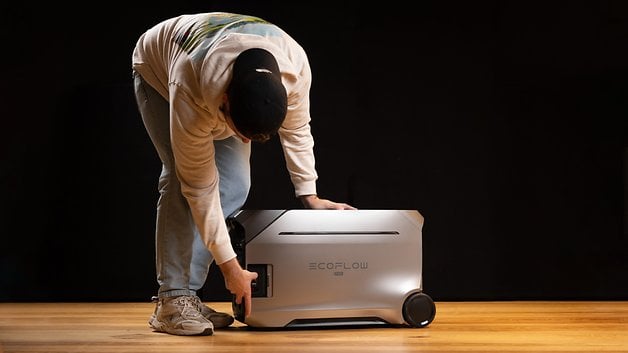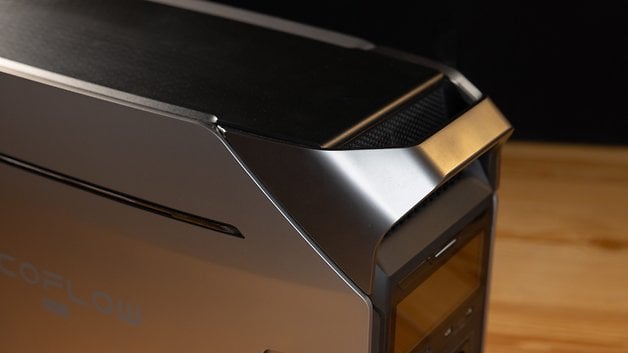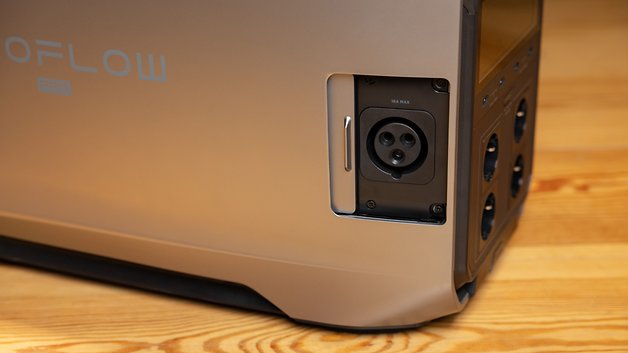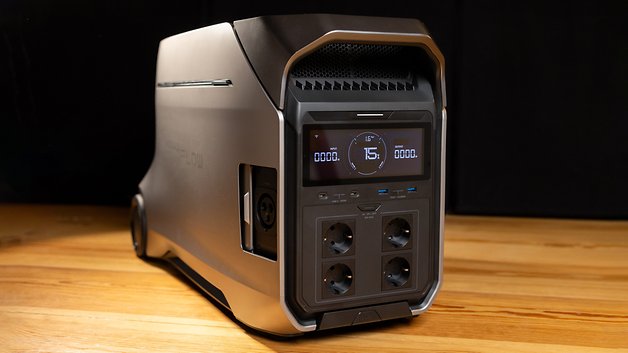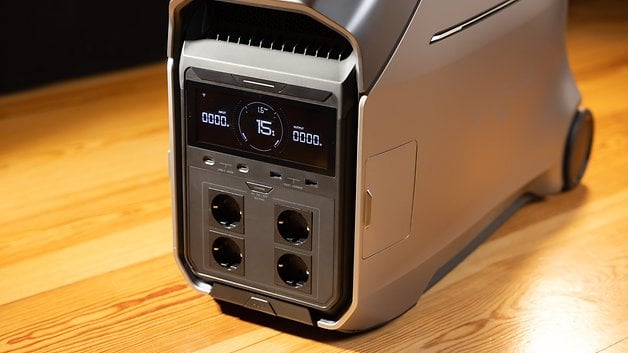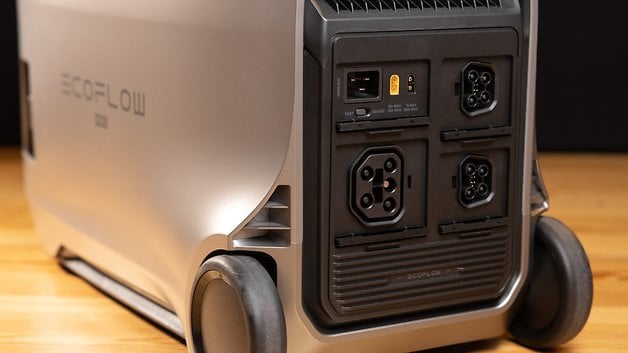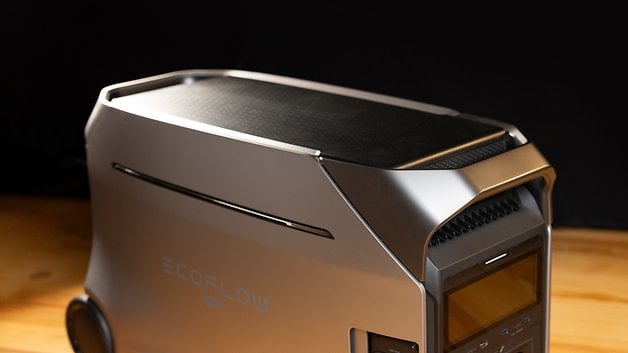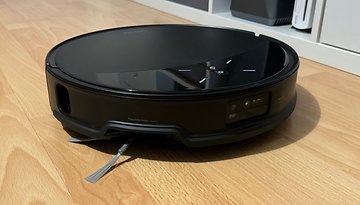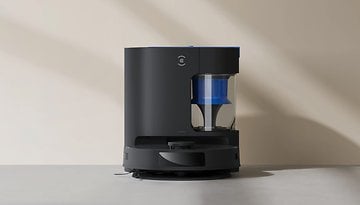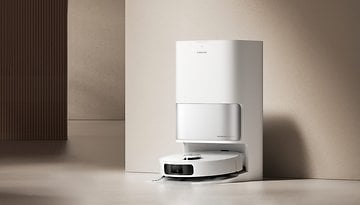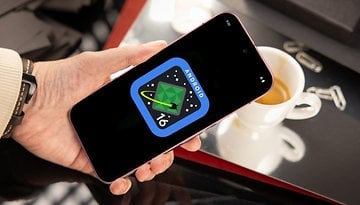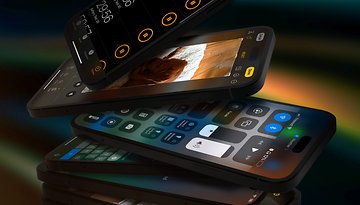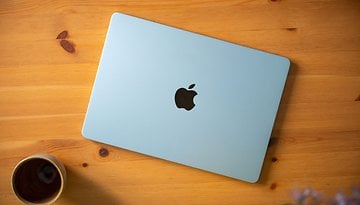EcoFlow Delta Pro 3: A Blueprint for Every Power Station
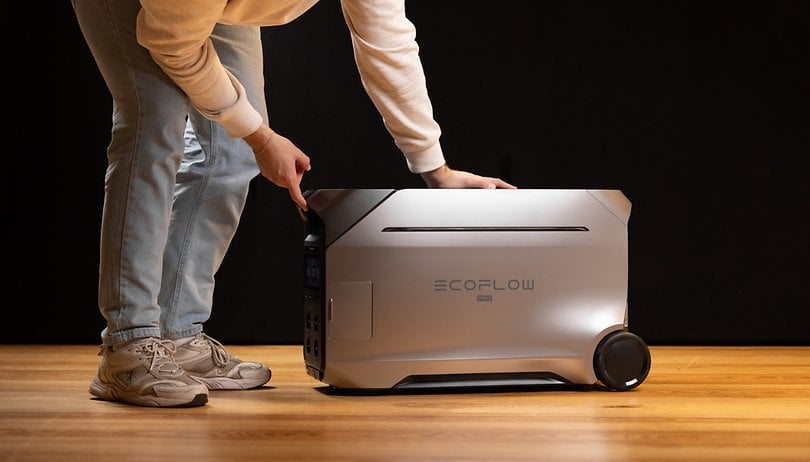

With the Delta Pro 3, EcoFlow is launching its largest and most powerful power station to date. The device has a capacity of 4 kWh and a constant output power of 4,000 W. In our detailed test, we reveal how the model impressed us and whether we recommend the $3,699 EcoFlow power station.
Good
- Modern design
- Huge range of connections
- Telescopic handle and wheels for easy transportation
- Expandable to 12 kWh
- 4,000 W constant output power
Bad
- The price of over 3,000 euros
- A decent heavyweight at 51.5 kg

Price & Availability
The EcoFlow Delta Pro 3 is a fantastic power station. Even though the device weighs around 52 kg, it deserves to be called a portable power station. To make it easier to transport the heavyweight, the manufacturer has fitted a retractable carrying handle and two wheels.
The power station is no less impressive when it comes to capacity and output power. The Delta Pro 3 holds 4 kWh, with the option of increasing the capacity to a total of 12 kWh using two additional batteries. You can expect a constant 4,000 W output power from the device. If necessary, such as for heavy equipment on construction sites, the power station boosts the power up to 6,000 W for a fraction of a moment. With a connected battery, EcoFlow even promises 7,000 W.
The EcoFlow Delta Pro 3 costs $3,699 according to the recommended retail price. The device is already available in stores. You can buy the power station in the EcoFlow online store or from Amazon.
Editor's note: The unit reviewed here is the version sold in Europe, so certain specifications, such as output, may differ in other regions.
Connections and Processing of the EcoFlow Delta Pro 3
The Delta Pro 3 from EcoFlow is a real eye-catcher. At second glance, it becomes clear how many different connections the manufacturer has installed in the device. The fact that the outlets on the front are always open is unfavorable. However, all inputs are fitted with protective covers.
Unpacking the EcoFlow Delta Pro 3 is no fun. The power station weighs a whopping 51.5 kg and measures 69.3 × 34.1 × 41 cm. The scope of delivery is sparse. In addition to the power station, it includes an AC charging cable and a handle protector for the carrying handles. You can attach these to the two side handles if you fancy a spontaneous sports session and seriously decide to carry the power station.
Instead, we recommend extending the carrying handle and rolling the Delta Pro 3 to the storage location. EcoFlow has installed two wheels on the model. You will find the telescopic handle under the Schuko sockets at the front. There are also sockets here, although unfortunately not protected by covers:
- as already mentioned: 4x Schuko sockets with a constant output power of 4,000 W
- 2x USB-C ports with a maximum of 100 W and
- 2x USB-A ports with up to 18 W power output
The large LED screen is also immediately noticeable on the front, which acts as an alternative information center to the EcoFlow app, which I will look at in the next part of the test. Practical: on the right-hand side, behind the cover, there is a 16 A connection where you can charge your electric car.
At least the side access points are protected by a cover. Finally, the manufacturer has installed all the inputs for charging the Delta Pro 3 at the rear. We would particularly like to highlight the option of charging the Delta Pro 3 at an electric charging station.
Apart from that, there are two ports for additional batteries. Keyword extensions. The extension batteries have a capacity of 4,096 Wh. In addition, the battery is resistant to water and dust in accordance with IP65. Unfortunately, the Delta Pro 3 “only” has IP20 certification.
EcoFlow App & Smart Functions
The EcoFlow app offers more settings than any other software for power stations. Apart from controlling the AC and DC power supply, you have full control over the charging and discharging behavior of the Delta Pro 3.
You need a 2.4 GHz WLAN and Bluetooth connection to set it up in the app. To use the software, you need to create an account with your e-mail address. In the test, the Delta Pro 3 is found immediately. Pairing is child's play and works flawlessly in practice. The entire set-up process takes less than three minutes.
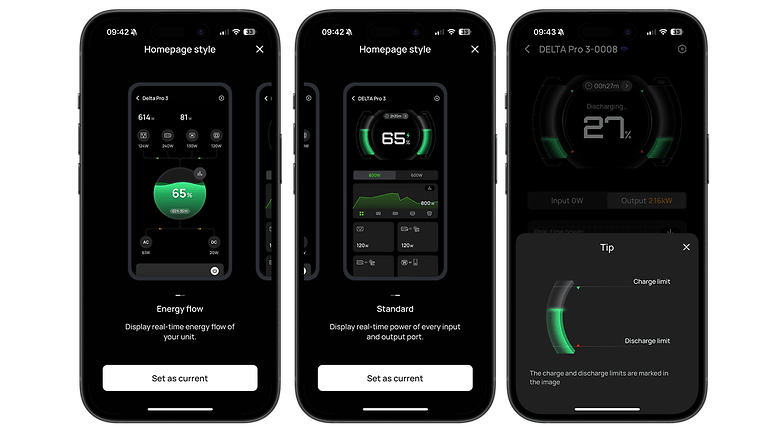
After the app has asked you for your preferred app design and gives you tips on how to use it, you can start operating the power station. In the start menu, you can see how many watts the power station is currently drawing or recording. Below this, you will find the options for activating the desired power supply.
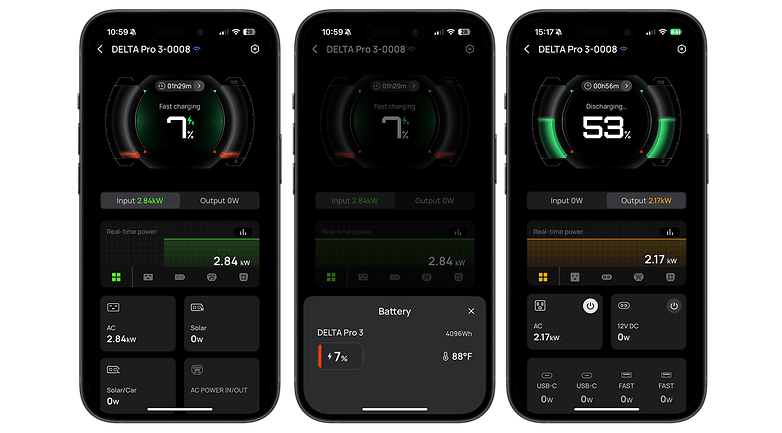
When you look at the other settings, it becomes clear how much attention EcoFlow pays to detail. For example, you can use the app to set a lower limit for the Delta Pro 3 up to which the power station should be discharged. The same goes the other way around. Here, you can specify the percentage up to which the device should be charged.
Customization options are also available for the charging behavior. These allow you to set the maximum power from 500 to 4,000 W in 50 W increments with which the device is to be charged.
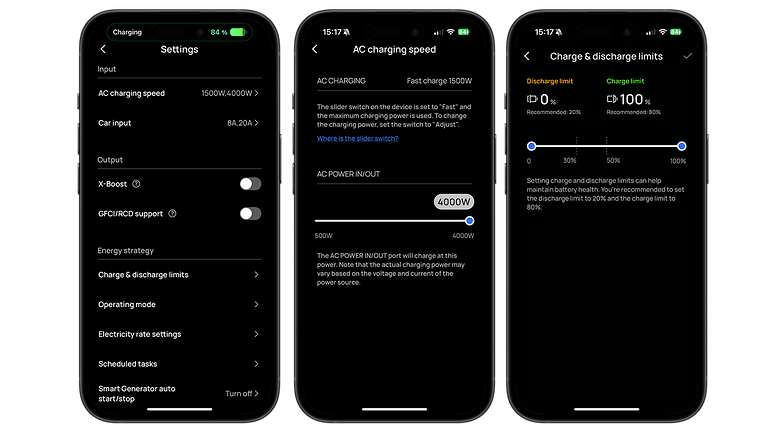
Finally, the screen is an alternative information center of the device. The large display provides you with information about the input and output power. You can also read how long a connected end user can still be supplied with power or how long the charging time of the power station will take.
Control works as usual using the buttons built into the device. The power station always emits a "beep" sound as soon as you switch on the device or activate a power supply.
Battery & Output Power of the EcoFlow Delta Pro 3
A whopping 4,000 W with a capacity of 4 kWh. The Delta Pro 3 impresses in all facets. The low operating volume is also absurd—even when the power station is spitting out 4,000 W, it is virtually inaudible. In terms of capacity, there are also only plus points to be awarded.
The EcoFlow Delta Pro 3 also functions as a solar generator, with a solar output of 1,600 W according to the manufacturer. In terms of connectivity, you can also connect EcoFlow's own inverter, PowerStream, to the power station if you're considering installing a balcony power station.
The EcoFlow Delta Pro 3 is an excellent choice for camping. Thanks to the 16 A connection on the right-hand side, you can supply your electric car with power at any time. We advise you to take foldable solar panels with you to generate electricity on the go. EcoFlow uses the latest and safest battery technology. The device contains LFP cells, which should still have 80 percent of their original capacity after 4,000 charging and discharging cycles.
The EcoFlow appliance is certainly not lacking in power. A whopping 4,000 W is constantly possible—without you even hearing a peep from the device—crazy! If you activate the X-Boost mode in the app, you can even reach 6,000 W for a short time. To get 7,000 W for a short time, you need to connect an additional battery to the power station.
However, the specified value only applies for a tiny fraction of a moment. The short-term power boost is intended to help get heavy equipment on construction sites up and running, for example.
With its respectable performance, you don't have to expect any loss of efficiency. The energy block consumes 4,885 Wh during an entire charging process. The Delta power station charges with a maximum of 2,900 W from the socket. Unbelievable, but true: the power station is also whisper-quiet in operation. The fact that the power station is 80 percent charged after one hour, as EcoFlow promises, is truly ingenious. Remarkable, with a nominal capacity of 4,096 Wh!
In practice, 3,997 Wh of the specified capacity can be used. This corresponds to a battery efficiency of around 82 percent. Not a new top value, but one in the respectable upper range compared to power stations from Bluetti or Jackery. The manufacturer has also integrated a UPS function.
UPS stands for uninterruptible power supply. In other words, this is your guarantee that the Delta Pro 3 will seamlessly take over the power supply to connected devices—for example in the event of a blackout.
Last but not least, there is the pass-through charging function. This means that the power supply of connected end users bypasses the battery when the Delta Pro 3 is connected to the mains. This prevents conversion losses, as the current passes directly through and is not converted twice into the battery and out again.
Final Thoughts on the EcoFlow Delta Pro 3
The EcoFlow Delta Pro 3 is the best EcoFlow power station that we tested to date. Even in direct comparison with other top power stations, there are few to no reasons not to choose the Delta Pro 3. The capacity is perfectly adequate for all applications. If you don't think so, you can expand the power station with additional batteries by 4,096 Wh each to a total of 12 kWh.
With a constant 4,000 W or short-term 8,000 W output power, the rolling supplier easily supplies power-hungry devices on construction sites. Transport to the construction site is uncomplicated—even though the device weighs around 52 kg. This is thanks to the telescopic handle and the built-in wheels.
It is particularly exciting if you are planning to install a balcony power station. You can connect the Delta Pro 3 to the EcoFlow inverter PowerStream. This means you can use the Delta Pro 3 not only as a back-up battery for your home, but also as a storage unit for your balcony power station. The fact that you can charge the power station with up to 1,600 W of solar power is another reason to opt for the Delta Pro 3.
In summary, we advise you to buy the EcoFlow Delta Pro 3. If this model is too big for you, we recommend smaller devices such as the EcoFlow Delta 2 Max (review) or EcoFlow River 2 Pro (review).
